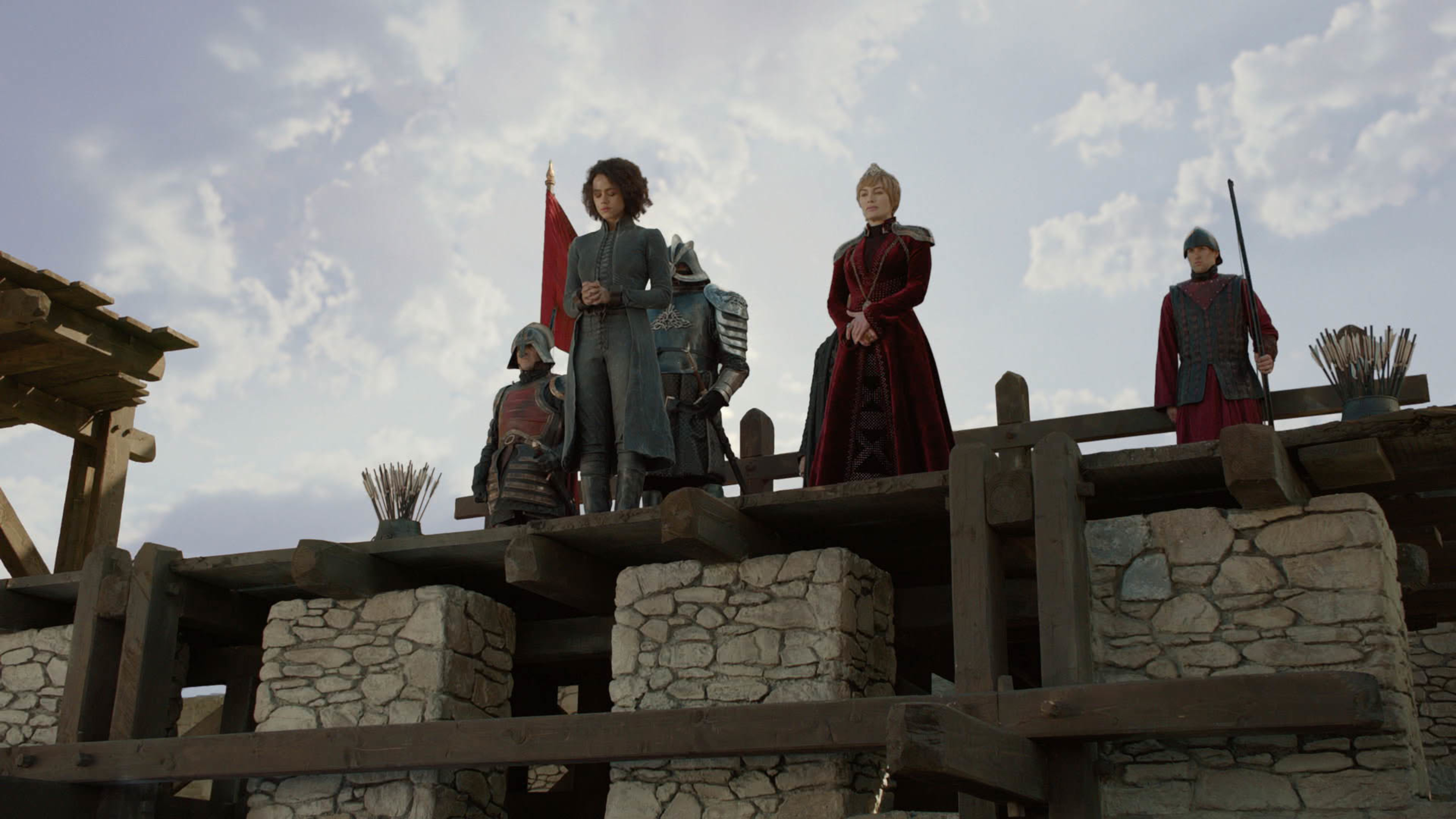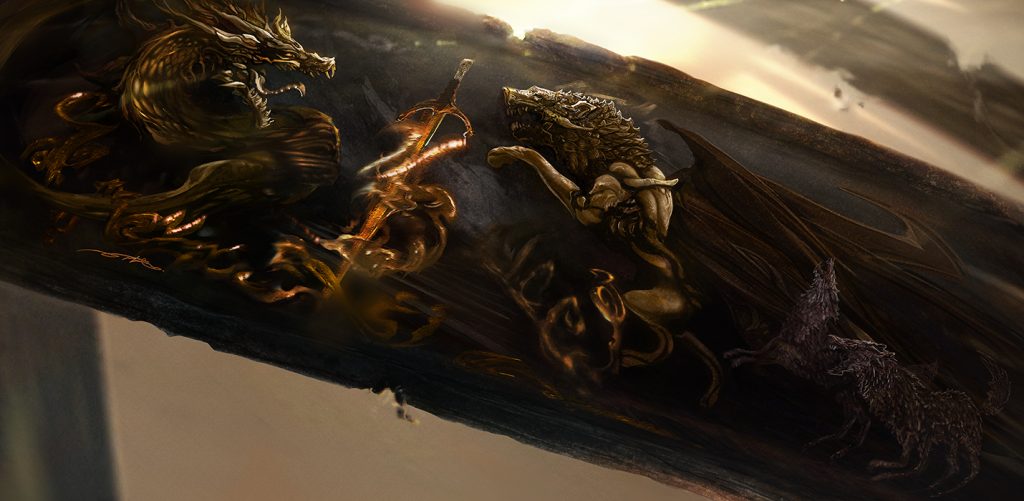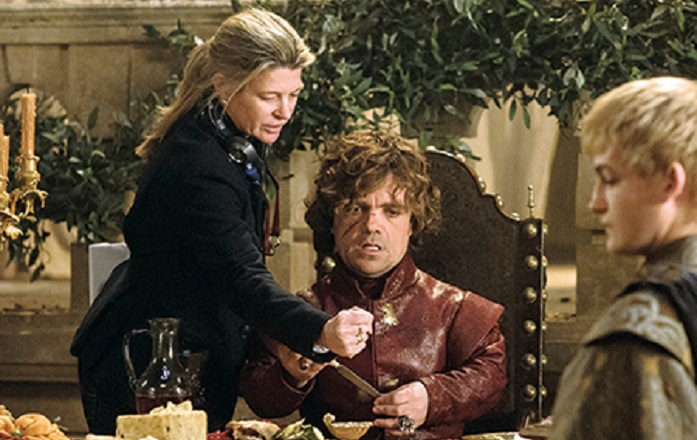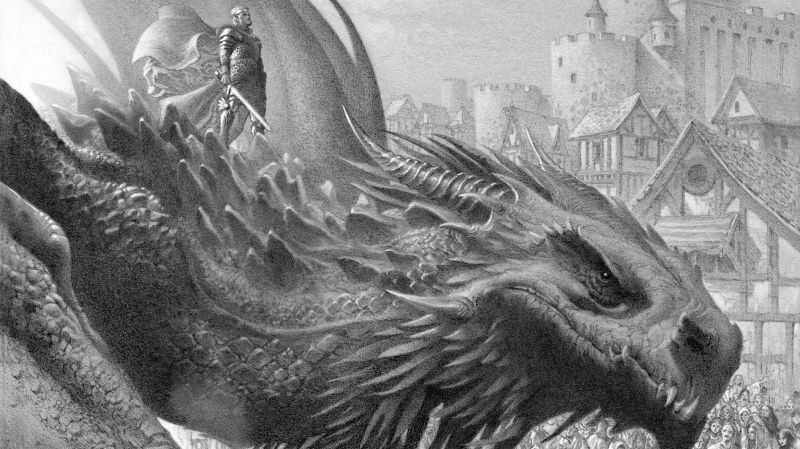“This is going to be the whitest show on television”. That was the gist of many reactions I saw across the web when HBO confirmed that the “Age of Heroes” prequel wasn’t getting picked up, moving forward instead with a series based on George R.R. Martin’s FIRE & BLOOD.
And it’s not an unwarranted reaction. As we fans know, Game of Thrones had a number of controversies during its 8-season run. Some I feel were quite overblown (such as the “Starbucks cup” or Jon not petting Ghost after the Battle of Winterfell), but other grievances people had with the show were understandable, and one of those was the lack of representation when it comes to people of color.
Missandei of Naath was one of the two major characters who were black, so when she was executed by the Mountain at Cersei’s command, seemingly to spite Daenerys after failing to force her hand, it ruffled some feathers among the audience (to say the least). Knowing what happened in the episodes that followed (and ended the final season), it does seem unfair from a story standpoint that Missandei died for a queen who would later turn genocidal and end up being killed by Jon Snow for the greater good of Westeros and the world at large.

Hindsight is 20/20, but there is no question that they could’ve and should’ve done better- and that’s what brings me to the new adaptation that’s currently cooking in HBO’s kitchen.
FIRE & BLOOD tells the story of the Targaryen dynasty, so it’s only natural to assume the main players will be white and blonde. However, there are numerous supporting characters, which opens up an opportunity to have a more diverse cast and subvert expectations for the television adaptation.
The book isn’t a novel, but a fictional history book. As such, it’s thin on details, and you could say that character development is non-existent. This is not a knock on the book, which I think is actually pretty good; only that the format doesn’t allow diving into what makes the characters tick. Dialogue is sparse, and so is the interaction, i.e. Orys Baratheon may have been the best friend of Aegon the Conqueror but the book won’t tell us what they talked about in their free time. Did they drink? Go hunting? Talk about the weather? How did they refer to each other? (Think about how Robert affectionately called Eddard “Ned”.)
This could be a tad disappointing for readers who are used to George’s style in the main series, where every chapter is written from the character’s point of view and we can read their thoughts, learn their hopes and fears and get a feel of what motivates them. But for a screenwriter working on an adaptation, this opens up a kaleidoscope of opportunities. The book outlines the major beats; it’s now the job of the team behind House of the Dragon to fill in the blanks, and flesh out the personalities of the characters, give them lines and make them interact with each other to create memorable scenes.
I believe HBO has learned a great deal from their Game of Thrones experience and will take steps both to please the fans and avoid criticism and/or controversies, as much as they can.
In fact, a sign that the producers and the showrunners are moving in the right direction is the fact they’ve put together a writer’s room including two women (Claire Kiechel and Ti Mikkel). This is likely in response to another common complaint about Game of Thrones: that there was a distinct lack of female talent in both the writing and directing departments.
It’d be nice if director Michelle MacLaren came back to the world of Westeros, considering her Cowboy Ninja Viking film adaptation has stalled and Raven, the HBO miniseries she was developing with Vince Gilligan, has shown no signs of life since 2017. Projects going belly up in Hollywood is nothing out of the ordinary–it happens all the time–, but it’s certainly frustrating that it keeps happening to a woman who has more than proven her directorial chops.
Karyn Kusama, of Girlfight and The Invitation fame, recently worked with HBO directing an episode for The Outsider miniseries. She has a knack for flawed characters, high tension and unflinching violence, so that makes her a perfect fit for a FIRE & BLOOD adaptation in my book.
There are many women director/writers who have been praised for their film and TV work, but rarely get any recognition, let alone big projects. So giving them a chance to shine in a prestige, big-budget HBO series could be a boost for their careers and also a major benefit for the show.
Just off the top of my head: there’s Issa Lopez who made Tigers are not afraid, a fantasy-horror fairy tale in the vein of Pan’s Labyrinth. The hard-hitting realism of her movie, in which not even children are safe, is not unlike what we see in the world of Ice and Fire. She likes playing in the fantasy sandbox so she’d be right at home.
Celine Sciamma, recent Queer Palm recipient, received attention for Portrait of a Lady on Fire but was ultimately ignored by the Academy. She has a style that puts women front and centre and deals with complex themes in a nuanced and unconventional way. In my mind, she could add richness to the stories of the Targaryen women (who are often overshadowed by the men) – Rhaena, daughter of Aenys I, in particular. She doesn’t take part in much action, but her life is full of tragedy, including her doomed relationship with Elissa Farman.
Jennifer Kent, director of The Babadook, could also be a good choice. It was her horror directorial debut that put her on the map, but it’s The Nightingale that, in my opinion, demonstrates she could be a valuable addition as director. Much like Thrones, The Nightingale isn’t for everyone and isn’t always easy to watch, with its gritty and unrelenting brutality in a harsh, unfair world. But in Kent’s own words, when responding to criticism about the film’s graphic depictions of murder and sexual violence, she set out to “tell a story about the necessity of love, compassion, kindness and empathy in a very dark time”. Though the fictional events of FIRE & BLOOD pale in comparison to what is a historically accurate depiction of very real colonial violence, Kent’s powerful voice and gripping direction could elevate the material.
Here’s hoping we get more diversity in the director’s chair! If a woman director gets a chance to take on a big, battle-centric episode, that’d be a first for Westeros and very exciting news.
Unlike GoT, FIRE & BLOOD doesn’t have a cast of characters whose stories we can follow through several novels or TV seasons. Instead, the book is divided in sections, each about different Targaryen rulers, spanning hundreds of years. So, it’s unlikely that we’ll have many series regulars, as most of the cast will keep changing.
The obvious downside to this “anthology” format is that there won’t be a chance for the audience to get too attached to a character (or several of them) they’d like to follow to the very end. So the series will have to rely on the strength of the writing and in how interesting the characters can be. There’s gotta be a good, solid reason (or many of them) for the audience to keep returning to the show every new season.
On the other hand, having new, fresh faces every year and an ever-changing world also gives the talent behind the camera more freedom to pick a huge variety of actors and actresses for characters both canonical and original. I’m expecting to see some inspired and diverse casting, with more presence of people of color than in the original series.
Apart from that Sansa scene, Season 5 of GoT is infamous for its Dorne subplot. I for one didn’t think it was so bad (partly because of the banter between Jaime and Bronn), but it’s a rather uneven part of the story and the negative reception was such that the showrunners quickly eliminated both Doran and Trystane Martell in the premiere episode of Season 6, as if sweeping a failed experiment under the rug.
House of the Dragon will probably have a second shot at adapting Dorne. Hard to skip it, since it was the one kingdom Aegon I was unable to take by force, giving him considerable pains. I’m personally looking forward to see how they’ll tackle the character of Meria Martell, the old and sharp-tongued Princess of Dorne. She’s got the potential to be the Dornish equivalent of Olenna Tyrell, with some lines that could close an episode in spectacular fashion:
You may burn us, my lady, but you will not bend us, break us or make us bow. This is Dorne; you are not wanted here. Return at your peril!
The Targaryens interact with dozens of different people, both friends and foes, from different places and cultures other than Westeros. Maesters, warriors, septons, merchants, rulers, outlaws and so on. It’s a field that is ripe for letting the imagination fly and give an extra dimension to characters that in the book are secondary or background figures at best. Having different arcs and other players to root for (or to love to hate) other than the Targs is (possibly) the best way to recapture the magic of the original series.
The production designer and their team of prop makers, set designers, costume designers, among other creatives, will also be able to offer many different things to look at. Whereas in GoT, we had an established look for certain elements (be it armor, the castles, etc.) that would remain mostly the same in each season, time jumps of decades will allow us to see things such as how King’s Landing grows from a forest area to the sprawling capital of the Seven Kingdoms.
The future looks bright for House of the Dragon. I’m confident it’ll join the ranks of the few prequels that have actually managed to stand on their own without retroactively hurting the series from which they spawned via retcons, unnecessary callbacks or explanations to things nobody asked -or at least I hope so.
In the words of Tyrion Lannister, “Life is full of possibilities”.
The post From the Maester’s Desk – House of the Dragon’s Potential for Expansion and Diversity appeared first on Watchers on the Wall.
Via http://watchersonthewall.com



No comments:
Post a Comment